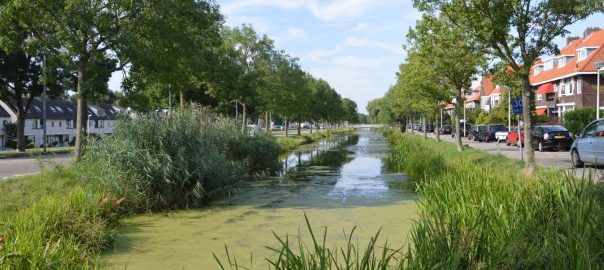
It’s technically not the rainy season yet in Lagos, but the effects of the rainfall so far have not gone unnoticed. It’s the usual – floods and roads that seem to wash away. Both effects lend to longer, more frustrating commutes within Lagos. Over the years, government has attributed the floods to blocked drains. Blocked drains are a problem, but Lagos lacks adequate drainage infrastructure to support its constant development. There is also an over-reliance on grey infrastructure, especially when other cities have utilized green infrastructure to sufficiently address these issues.
Green infrastructure refers to the nature-integrated infrastructure systems; They utilize vegetation to restore natural processes that facilitate water management in urban areas. This system incorporates rain gardens, green roofs, permeable paving and rainwater harvesting systems. On a city scale, it involves restoring and preserving forests, floodplains and wetlands.
Causes of Floods
There are two main categories of floods: inland and coastal. Heavy rainfall and rapid run-off rates cause Inland Floods while tidal events, storm surges and sea level rise cause coastal floods.
Typically when it rains, the hardscape surfaces prevent water from directly infiltrating the ground and replenishing the water table. The water flows towards gutters and drains, carrying pollutants with it. These pollutants could cause a blockage in the system which causes flooding at/near the run-off source. The run-off could also pollute the rivers/ streams the drains discharge into. If the discharge is heavy, and the drains flow freely, it could cause flooding at the point of discharge. Either way, an over-reliance on grey infrastructure can have dire consequences.
Coastal floods can occur when the sea height (due to storms or high tides) exceeds the height of the coastal barrier. It can also occur when strong waves break the barriers and inundate nearby land. These floods are mostly natural occurrences, although human activity along coasts can worsen them. An unprecedented example of this is the current fatal floods that are ravaging Mozambique, Zimbabwe and Malawi due to Cyclone Idai that hit about a week ago.
Green Solutions
Green infrastructure systems can address the dire consequences of the existing drainage systems in Lagos. The systems span multiple scales which makes it easier for them to be implemented.
Small Scale Solutions
Permeable surfaces, preferably vegetated surfaces, naturally filter particles and trash from run-off water before it settles into the ground. Utilizing roof tops as rain gardens can further reduce the amount of run-off.
Other solutions include harvesting rainwater. This technique involves directly collecting and storing stormwater in tanks or reservoirs and using it to water gardens, laundry or feed livestock. The users can treat the water and use it for cooking and drinking as well.
Medium Scale Solutions
Bioswales are similar in purpose to rain gardens- they help slow down, hold and filter stormwater run-off, but they do so on a larger scale. Large expanses of impervious surfaces- parking lots and roadways- create more run-off and bioswales aid in controlling it. The most common example of a bioswale is the vegetated median on road ways.
Large Scale Solutions
Solutions like preserving forests, flood plains and the creation of wetlands are important measures for managing and preventing coastal floods. The benefits of preserving forests is similar to that of vegetated permeable surfaces. Floodplains are the flat low areas next to bodies of water that are subject to flooding during high discharge periods. Establishing and maintaining wetlands within floodplains is integral in managing coastal floods.
Wetlands serve as a buffer between bodies of water and built-up land. During storm surges, hurricanes, cyclones and other natural water-related disasters, wetlands provide a retention system to minimize the impact of floods on land and property. They can also be a part of the small scale stormwater management systems by holding water from drains, filtering it and slowly releasing it into nearby streams, lakes and oceans. This can improve the quality of the water, create habitat for a range of species (mammals, birds, reptiles and invertebrates) and provide spaces for human recreation.
Last year, flooding contributed to the loss of lives and property in multiple states. These floods were of the inland and coastal types. This shows that the sole utilization of grey infrastructure is inadequate to contend with the factors causing floods. With the rapid development occurring along the coast of Lagos, it is imperative that we explore alternative solutions. In other countries, green infrastructure systems have proven to be excellent, especially when combined with existing systems. Due to the flexibility in scale, the government can implement some of these green systems and so can individuals. Together, we can alleviate the detrimental effects of floods in our cities.
